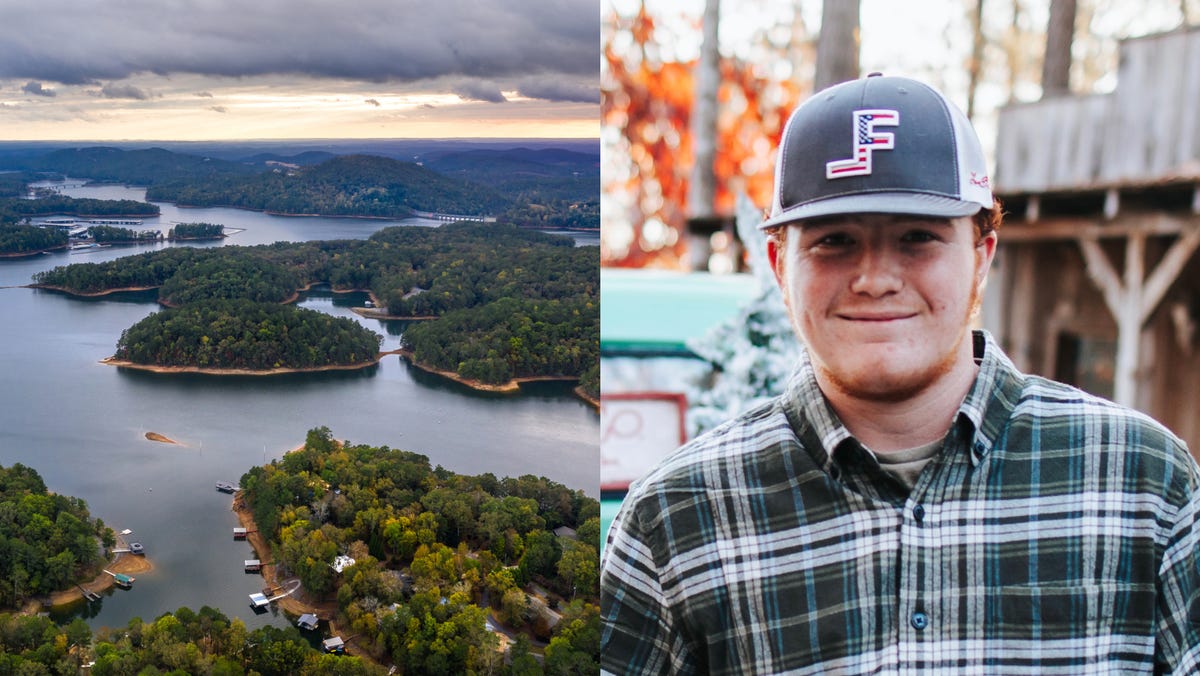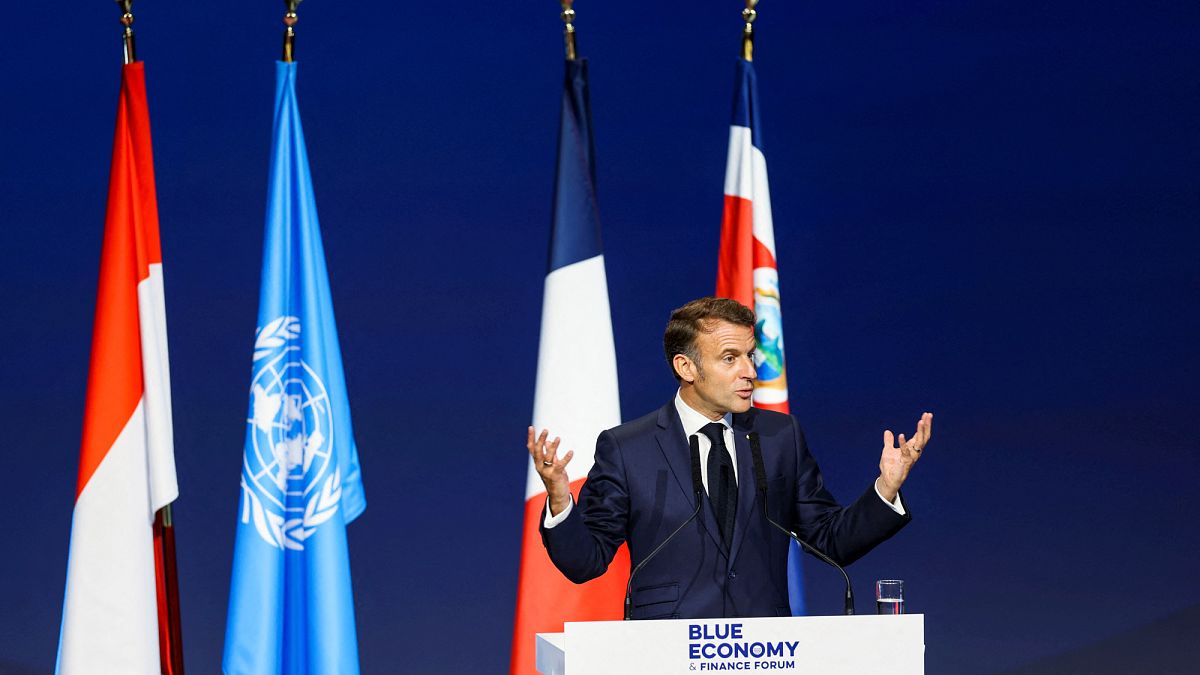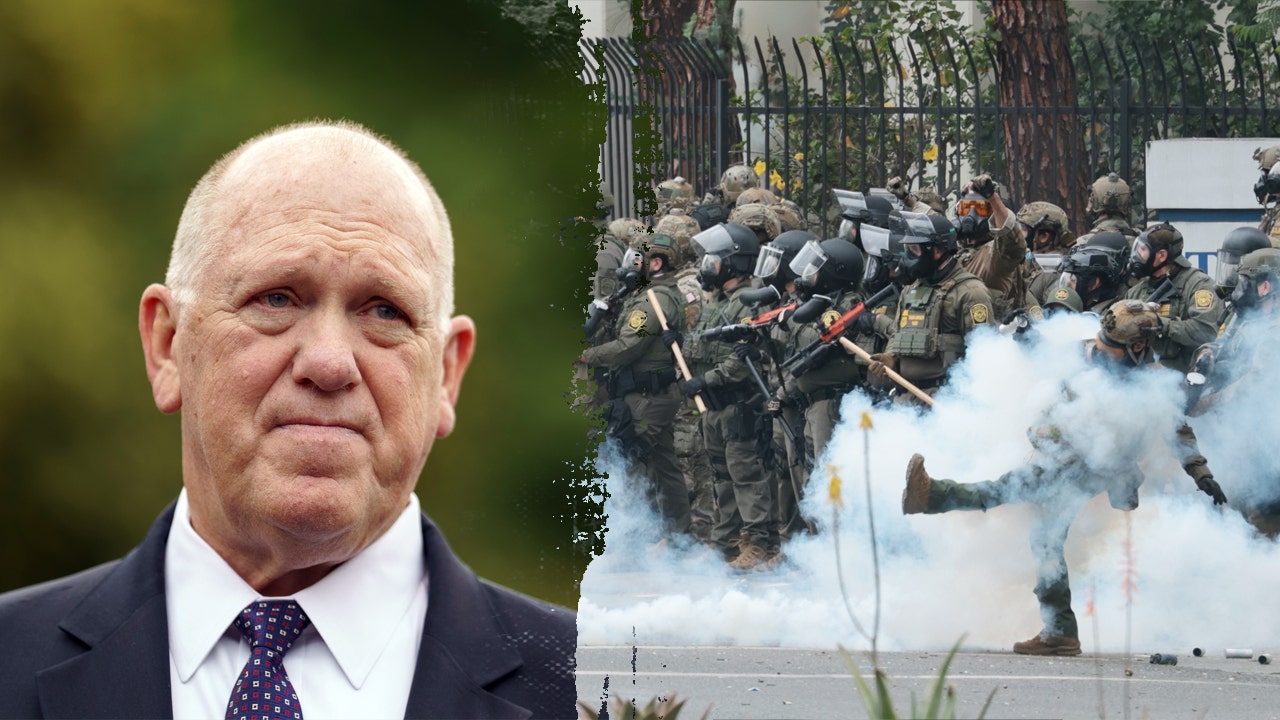Arizona
In the Most Paranoid Right-Wing Primary of the Year, the Biggest Existential Threat Is Off-Limits

A crowd of several dozen people at the Hangar, a Trump-themed speakeasy, stood and bowed their heads in prayer. An elderly woman whispered meekly, almost imperceptibly, into a microphone. She thanked the Big Man for guiding that bullet away from our big man, President Donald J. Trump, and thanked the assembled for joining in this critical democratic exercise. “Amen,” we said. It was a little after 6 p.m. in late July, and we were deep in the suburbs of Phoenix. The temperature outside was 114 degrees.
We had gathered at the speakeasy, housed in a multicar garage, for a meet and greet with five of the Republican candidates running for Congress in Arizona’s District 8. It may be the most paranoid and incensed and embittered primary race happening in the country.
Arizona has become a hotbed of election denialism (and related conspiracy theories) since 2020, when Biden won the state, the first Democratic presidential candidate to do so since 1996. When a congressional seat opened up in this solidly red district—a stretch that encompasses parts of Phoenix proper, then sprawls northwest into the suburban satellites of Peoria, Surprise, and Sun City and out into the desert, an area sporting the second-, third-, and seventh-largest retirement communities in the country—the race became a contest of right-wing fanaticism.
The big talking points: A crisis of leniency toward criminals. Border wide open. Gangs and foreigners, gangs OF foreigners. Crime all-time high; inflation all-time high. Trans stuff. Los Angeles. The Democrats, who were agents of deep state control. And the weak national Republicans, who had not done enough to wrest that control back.
Vying for the open seat, in a race that will be decided Tuesday, are Abe Hamadeh, a 32-year-old Army reservist who ran for and lost the 2022 attorney general’s race, and still refuses to concede the result; Blake Masters, 37, one of Peter Thiel’s political pet projects and notorious gun whisperer, who ran for and lost the 2022 Senate race in the state and has at least sort of accepted the outcome; Anthony Kern, a state senator and Jan. 6 attendee who is under indictment with nine felony counts for his role as a fake elector in the attempt to overturn the 2020 election and who is also known for going on a pro-Hitler radio show; Trent Franks, a tea party type who held the seat until 2017, when it came out that he had offered a female staffer $5 million to let him impregnate her; and Ben Toma, the Arizona House speaker, who is endorsed by the outgoing representative from the district. That outgoing representative would be Debbie Lesko, whose signature legislation in Congress was a ban on a gas stove ban that … didn’t actually exist. The “QAnon Shaman,” Jacob Angeli-Chansley, the painted face of the Capitol riot, was also in the race for a little while, attempting a run as the Libertarian candidate.
Hamadeh, the presumptive favorite, has been smeared by Masters and his supporters as a “terrorist sympathizer” and as having “no skin in the game” because he is unmarried and childless. Hamadeh has said that Masters was “having a mental breakdown.” Things had gotten heated.
The Hangar, where all five candidates would speak, was garlanded with flags. There was the American flag (cloth), the American flag (digital), American flags superimposed with logos of the Arizona Cardinals and Miami Dolphins, and an American flag with some John Hancock–esque cursive script citing the Second Amendment. There were Trump flags: “Trump 2024 Take America Back”; “Trump and I Will Not Apologize for It”; “LGBT: Liberty, Guns, Beer, Trump.” The flags hung from the ceiling and on the walls and were draped over the tables as tablecloths. There was catering and Coors Light in a fridge.
Many of the attendees brought and wore their own regalia, sporting Trump hats and tees both contemporary and dating to bygone cycles. One older woman had on a shirt that said: “I’ve never been groped by Donald Trump, but I have been screwed by Joe Biden.” There was a plastic pumpkin with Trump’s face that in any other environment would have read as liberal mockery, but wasn’t, and a poster of Scarface, and one of Humphrey Bogart. The garage, it must also be said, had no windows and no air conditioning. I fanned myself aggressively with a brochure that read “Blake Masters, Deport Illegals.”
Toma, the Arizona House speaker, spoke first. In basically any other district in the country, he would be a decorated and experienced far-right candidate. He was a zealot, he assured the assembled, a zealot who had even passed legislation! He was, according to ubiquitous yard signs that peppered the highways and freeway on-ramps, “endorsed by police.” But he was fighting a startling—for this crowd—allegation: “Lately, there have been some attacks going around,” he told the attendees, ”about me being somehow a Never Trumper. That is patently false. That has never been true.”
Someone in the audience chimed in, ostensibly coming to Toma’s defense: “There’s a lot of people out there that have been Never Trumpers, and in fact J.D. Vance was not a Trump supporter,” she said. It was not entirely stirring. “I’ve always been a Trump lover,” she clarified in her own defense. Toma excused himself to attend his twin daughters’ birthday party.
Masters came after. He hit the high notes: that there was rampant voter fraud, that millions of illegal immigrants were pouring in, that China was evil, that Democrats were evil, that crime was out of control, that Trump is awesome. “The one thing I want you to remember when you go to vote: I’m the guy who was too conservative and too independent-minded for Mitch McConnell’s taste last cycle,” Masters said. (Masters, for what it’s worth, received a $25 million bonus from Thiel weeks before declaring his candidacy—a payment that was part of five year plan agreed to while Masters was still employed at one of the venture capitalist’s firms.)
In his pitch at the Hangar, he name-checked Vance, his endorser—“he’s a good friend of mine”—and pushed a growing line, popular among his ilk, that “American business needs to work for American workers.” But the biggest hit was the call-and-response: “The correct amount of illegal immigration is how much?” Masters asked. “Zero!” the crowd responded. “Deport them all, by the way!” he lobbed as a rejoinder. Another big hit was when Masters said: “Joe Biden committed treason against this country.” Cheers and applause.
“You guys are wide awake—you’re paying attention,” he encouraged our aged crowd. “I got this young energy,” he promised them.
Then, Hamadeh, who is even younger than Masters, so young he brought his mom along, took the mic. Similar high notes: voter fraud, fake news, illegal immigration, Democrats evil, Trump awesome. He reminded us that he and only he was endorsed by Trump (this would change a week later, when Trump would come out with a surprise co-endorsement of Masters), that he had Trump’s number, that he texted him—though it was not clear if Trump texted back. “These Marxists are not going to hand over the keys of power so easily. We have to take it from them!” Hamadeh said. “We are at war,” he added. He pledged to designate the drug cartels as terrorist organizations, in keeping with Trump’s new bluster about invading Mexico, and promised to ban ranked choice voting, which doesn’t even exist in Arizona.
Then came Kern. “I was endorsed by President Trump when I ran for the state Senate,” he assured the crowd, before launching into it. (Voter fraud, fake news, illegal immigration, Democrats evil, Trump awesome.) Kern was so committed to election security that he had nine felony counts to prove it. “I was there on Jan. 6,” he said proudly. “I was there to hope Mike Pence would do the right thing.” He continued, wistfully reminiscing: “It was a fantastic event … 2 million people… we were waiting on Mike Pence to do the right thing.” Kern’s flourish: a pledge to defund the DOJ, the FBI, and the IRS. He also called for a boycott of Chase Bank, after they had canceled his wife’s account.
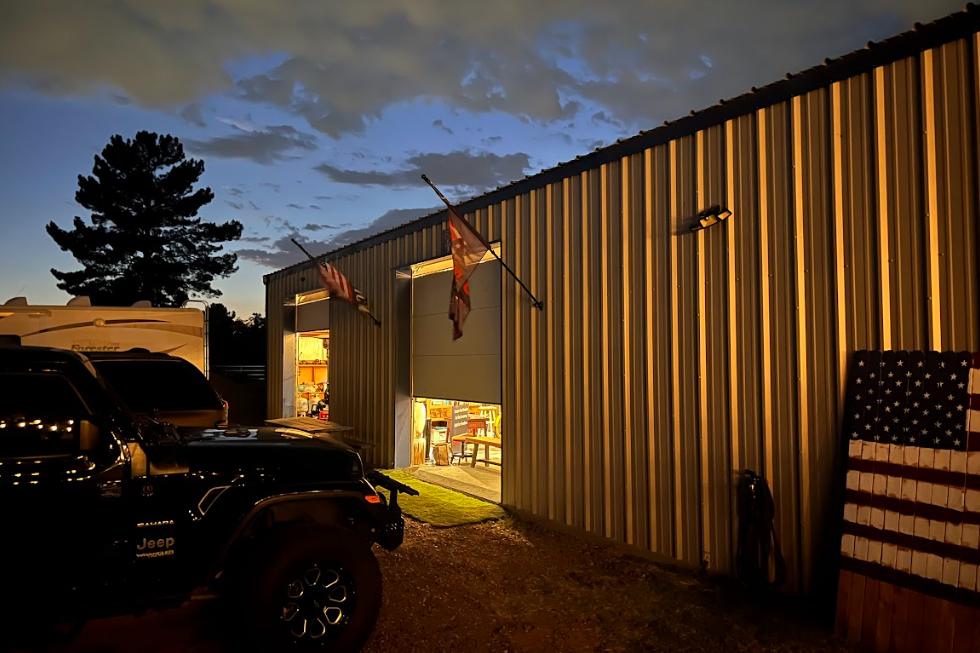
Alexander Sammon
Finally, Franks. He gripped the microphone with two shaking hands. He could have allied himself with Trump via their shared history of sexual misconduct allegations, but no: He went with an anti-abortion line, which the crowd clearly approved of. But when he tied it to slavery—as in, abortion is bad and so was slavery—he started losing the room. People near me began to grumble. He saved voter fraud, fake news, illegal immigration, Democrats evil, Trump awesome for his closer.
During the Q&A portion, an older woman started her turn by explaining that she paid her student loans every month. “I got a letter in the mail,” she said, and “they told me that my student loan was completely paid off.” Biden’s student loan relief policies have been shot to pieces by right-wing courts, but what little remained had gone to fixing existing loan forgiveness for people who had been defrauded or made payments for years and were unable to dig out of the hole. Here, incredibly, past the two-hour mark in this sweltering garage was someone whose life had been materially improved by student loan policy. I thought I was about to hear a rare voice of dissent, right-wing ideology punctured by the undeniable force of lived experience.
But then, she said, “I never planned on applying for it, never applied for it. I was insulted by it. Had no choice. And then two or three weeks later I got a check in the mail for $300.” She paused, and added mournfully, “I was flabbergasted.”
“They’re buying votes!” Kern responded. “That’s where we’re really in trouble,” said Franks. “They’re just evil,” said Masters. “The political class is pillaging the American people,” said Hamadeh.
I helped myself to a Coors Light from the fridge. The long desert dusk was turning to darkness when I left. It was 109 degrees.
Phoenix is one of the biggest cities in the United States, with a metro area spanning nearly 15,000 square miles. It is also one of the country’s fastest growing metropolitan areas, expanding by 800,000 people in the past decade alone.
But what makes the place unique is how exceptionally, brutally, inhumanly hot it is there.
Last year, the city endured temperatures of 110 degrees or higher for a record-breaking 55 days, the most ever. This year it is on pace for more. This June was Phoenix’s hottest on record; NASA found that the surface temperature of certain Phoenix sidewalks was 160 degrees. In June. And, as the National Weather Service informed one local news briefing, “July temperatures so far have averaged 6.1 degrees hotter than normal.”
It’s not just the city’s temperature extremes on the high end that are brutal. One of the biggest issues now is the temperature lows, which are still often in the 90s. The fever just never breaks. There is no cool night air. There is no moderation; everything, at all hours, is extreme.
The extreme heat is an existential danger to residents. There were 645 heat-related deaths last year in Maricopa County, which spans most of the Phoenix metro area—the most ever deaths recorded in an Arizona summer, and a 1,000 percent increase over the figure from just 10 years ago. It’s hard to keep current with this year’s tally, which keeps going up. As of July 23, Maricopa was already looking into 396 possible heat-related deaths in 2024, according to the county public health department, already outpacing last year’s mark.
The heat is also driving people crazy: The National Institutes of Health’s National Library of Medicine has a whole lengthy file on the ways in which this has proved to be true: “Hot summer temperatures can make you anxious and irritable and dull your thinking,” “Reduced cognitive function during a heat wave,” and “Cognitive performance was reduced by higher air temperature.” Getting out of the heat then has the isolating effect of keeping people stuck inside constantly.
Arizona’s political climate is, too, uniquely feverish. The state has four members in Congress that are members of the furthest right Republican caucus (the Freedom Caucus), making it tied with Florida for the most from any state. But there are three times as many people in Florida as there are in Arizona, and 28 congressional representatives there. (Florida is also controlled by Republicans at basically every level.) Arizona, by contrast, has a Democratic governor and attorney general … and somehow, virtually half of its nine congresspeople are the type of extreme right-wing that can’t even work within the already extremely right-wing Republican Party.
Culture war issues burn bright in Arizona, and the Southern Poverty Law Center’s graph of “anti-government and hate groups” in the state has had a straight-up hockey-stick trajectory since 2021. Two members of the Phoenix-chapter of the national conservative group Turning Point USA assaulted an Arizona State professor. When I met with a group of Democrats in the district who were doing letter writing in a heavily air-conditioned living room, the group’s president, Chris Radice, told me: “This area is so red we can’t gather in public places like restaurants or cafés.”)
The red-hot friction happens within factions of the Republican groups too. The front-runners of the District 8 primary are pushing different visions of MAGA and conquest. Hamadeh wants to release that force abroad—bringing the war on terror to Mexico if that’s what it takes. Masters wants to unleash it at home, with isolationism and brutal crackdowns on immigrants, a grand thinning of the workforce that might somehow raise wages. Kern wants to end modern election procedures that have led to Democrats’ winning. But all the candidates agree that everyday Americans have been stripped of control and the only remedy is to seize that control—then exert greater control over the lives of others. Anything short of that is an immediate, existential threat to the Arizona way of life. The only existential threat to the Arizona way of life that nobody talked about while I was in town was climate change: The weather was just the way things were.
I met up with the QAnon Shaman, Jacob Angeli-Chansley, at a Chipotle on the Sunday Joe Biden dropped out of the presidential race, a stunning development that surprised Angeli-Chansley not in the slightest. It was 108 degrees.
We both got burrito bowls. Angeli-Chansley, who had been running as a Libertarian, told me he would not be representing the 8th Congressional District in Congress come January because he couldn’t get on the ballot. He saw that as a result of structural bias in our corrupt election laws: Libertarians by nature don’t like answering the door, he said, which makes it much more difficult to get the signatures required to win a ballot line. Angeli-Chansley said he also felt bad asking unpaid volunteers to put in the necessary hours to door-knock, plus he had already forsworn political donations, so that meant that paying people to door-knock was out of the question.
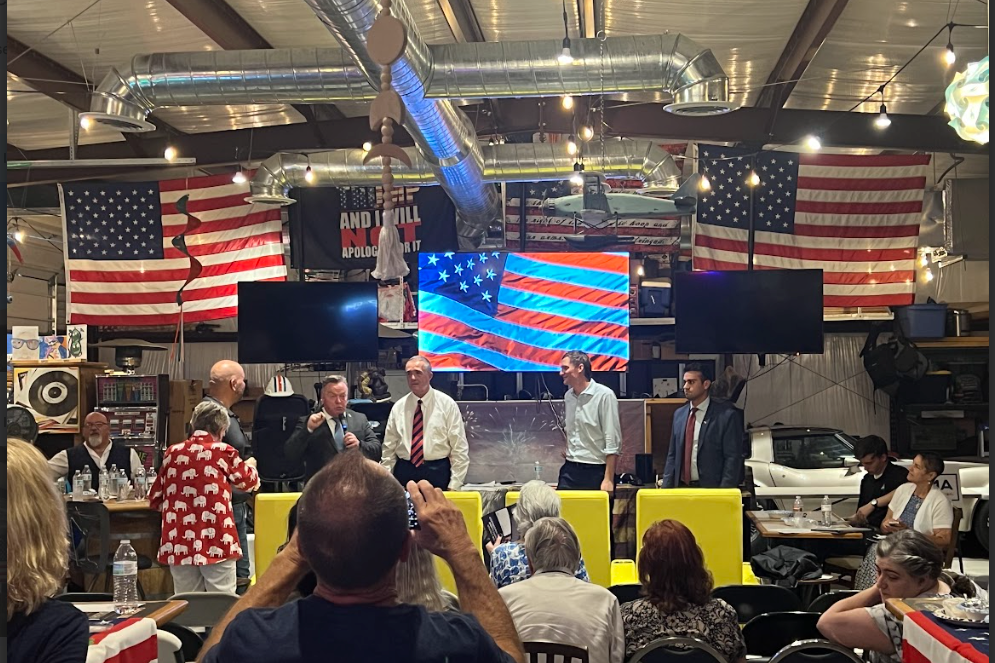
Alexander Sammon
Did he get close to the 800 names and signatures required to run, I asked? “No, dude,” he told me. “Not even.” He had let his campaign website lapse. “Shamanforcongress.com,” he sighed. (As of publication time, the site was still live.)
Actually, he said, he wasn’t really interested in politics. He was concerned primarily with the spiritual. He was making OK money selling merch and had an incipient coaching business, but he was giving away most of his lectures on the video platform Rumble and doing a ton of free consultations without signing up many paying clients. “I don’t like to make people pay for truth,” he said, a stance that put him in a bit of a bind.
He may not have signed them up as paying clients, but it seemed to me he was very clearly the spiritual leader of the Republican field in the district, and maybe even nationally. I told him as much. The events of Jan. 6 had been recast as a heroic display of patriotism by Trump and his allies, who were pledging pardons. Angeli-Chansley, with his cinematic getup of horns and face paint, was initially a symbol of the event and had since evolved into its most iconic martyr. He had served 27 months of a 41-month sentence in prison for his role, including, he said, over 10 months in solitary confinement.
Angeli-Chansley was a true native son of the district, he told me, though its exact confines have changed somewhat during his near four decades of life because of redistricting. He was shaped by, and had shaped, its political culture, more so even than the aspirants competing to represent it. Masters lived way out in Tucson; Hamadeh in Scottsdale.
Like the rest of the field, Angeli-Chansley was concerned about fake news, which he saw everywhere. He felt an urgent need to overhaul the current election system. He was suspicious of the undue influence that corporations wielded over American life. Big Pharma, for instance. He had, at his fingertips, an exhaustive recall of various proven conspiratorial occurrences in American history, like Operation Paperclip, a government program to bring scientists in Nazi employ to the U.S. after World War II.
Without the face paint, and free of his horns—the feds still hadn’t given them back, he said—Angeli-Chansley sounded a lot like many of the people I was meeting and talking to about Republican politics in Arizona. I told him he would’ve fit right in at the Hangar. He wasn’t convinced that the candidates were as serious as him. “Talking points,” he suspected. He wouldn’t be voting in the Republican primary, as a registered Libertarian, but I asked him to pick a favorite candidate anyway.
Kern, he told me, would be his favorite. “We met in the sauna of an LA Fitness years ago,” he said. Angeli-Chansley had seen Kern at the Arizona Capitol recently, though he claimed he was there not as Kern’s guest, as the Fake News reported. The two of them had also been at the Capitol in Washington on Jan. 6, 2021, but, he told me, they hadn’t gone together.
Not even four years ago, Angeli-Chansley was the cartoon rendering of American extremism. Now, it seems, the suspicion, distrust, and spiritual malaise he espoused was right at home in the Republican Party, central to the politics of his district, and probably common among plenty of other Americans too. He was a centrist, Angeli-Chansley told me, and though initially I suppressed a laugh, I began to suspect that there was a kernel of truth there—especially when it came to trust in government. (Also, he had some criticisms of Trump, including that he didn’t like the VP pick of Vance.)
We talked for two and a half hours. He knew a lot about civics, the structure of American government and its various institutions. He hated lobbyists. We got along nicely. “I don’t even see you as a journalist,” he told me. “I see you as a human being.” (Also: “The feds will just take your shit and shoot your dog,” he said. “Did they shoot your dog?” I asked. “No,” he said. It hadn’t come to that kind of standoff. “I turned myself in.”)
Finally, I asked him about the heat. Before he was the face of Trump’s conquering army, Angeli-Chansley had marched on the Arizona State Capitol in a climate change protest in 2019. I asked him if he was still concerned about the threat of the rapidly warming climate to the American way of life, the Arizonan way of life.
He wasn’t. “You know how I know climate activists aren’t serious?” Angeli-Chansley asked. “Because they aren’t calling for Tesla coils.” I confessed to limited knowledge on that particular technology. “Free, unlimited electricity,” he told me. The Tesla coil, I later learned from Wikipedia (a site Angeli-Chansley had warned against as a Fake News hub), is a 19th-century transformer circuit that carries very high voltages with very low currents. It exists, and is most commonly seen at places like children’s museums, where you can touch a glass orb and see the electricity follow your finger.
It was 111 degrees when I got back in the car. One of the brochures from the meet and greet had melted into the passenger seat of my rental car.
Whoever wins the primary—be it Masters, Hamadeh, Kern, Franks, or Toma—will have to go up against Democrat Gregory Whitten in the general.
When I met Whitten at a coffee shop the day after my Chipotle run with Angeli-Chansley, Whitten was not in campaign mode. He already had the Democratic nomination sewn up; he was running unopposed. At 12:30 p.m., it was only 104 degrees, which Whitten noted was not really that hot.
Whitten was actually from the district—neither Masters nor Hamadeh lived in 8, he reminded me. He had worked in politics for years, dating back to the first Obama campaign. He had lived in Washington. He was committed not to partisanship but to constituent services, ready to walk into any room and hear out the concerns of any affinity group.
Democrats had been content to not even contest this district in the past. Outgoing Republican congresswoman Debbie Lesko won 96.5 percent of the vote as recently as 2022. Even serving as a poll worker in this part of the country can be a formidable enterprise; signing oneself up to the face of the opposition in a race already nationally known for nastiness seemed like a frightful proposition.
“Oh, they’re gonna tear me apart,” said Whitten, when I asked how he anticipated the next few months playing out. He told me he had had conversations with his wife about the threats they anticipated once the Republican candidate has been settled upon.
Why, then, was he doing this, I asked? Whitten was resolute: He believed he could win. He believed he could pull off a historic upset. The district was changing and growing, and it wasn’t that red according to official partisan lean. It had a large Latino population, it was set to benefit greatly from the construction of a new Taiwan Semiconductor plant, which was being built with much fanfare as part of the Biden administration’s CHIPS and Science Act, a multibillion-dollar commitment to reshoring high-paying manufacturing jobs in a critical industry.
“I think people will recognize that when I tell them: ‘I work for the taxpayers, I work for you,’ ” he told me. “I don’t believe everyone is going to buy into these crazy politics.” He was going to break the overheated partisanship a simple sell: “My job is to make sure the district is taken care of.”
We shook hands, and I walked back out into the scalding afternoon heat. According to preliminary data from the European Union’s Copernicus Climate Change Service, it was the hottest day in recorded history on planet Earth. In Phoenix, the high was 111 degrees, with a nighttime low of 85.
It was a really nice idea that better constituent services might break the fever. But considering the political climate, it might have been the wildest thing I heard all weekend.

Arizona
Kari Lake calls out 'disingenuous' Arizona gov over veto of bill limiting Chinese land ownership | Fox News Video

Arizona
CBS: Cardinals Have Under-The-Radar Star

For the Arizona Cardinals to get over the playoff hump in 2025 after narrowly missing the postseason a year ago, the team is going to need several of their guys to step up.
When I say they need guys to step up, I’m not referring to their current stars.
We know guys like Trey McBride, James Conner, and Budda Baker will hold up their end of the bargain. Free agent additions like Calais Campbell and Josh Sweat should also be exempt. We should have less than zero questions there.
Players being asked to step up also does not include the young players like Marvin Harrison Jr. or Walter Nolen III.
No, the players who should be asked to step up are those who are in positions to start, make significant contributions, and potentially alter games.
The Cardinals have several players who fit that billing.
I could name a slew of players that make sense to hold that label, but one player who stands out to me the most is third-year man Michael Wilson.
Apparently, I’m not the only one, either.
CBS Sports’ Garrett Podell constructed a list of three “under-the-radar” stars for every NFC team this upcoming season and highlighted the Stanford product for Arizona.
Podell started off with this to say:
“Pro Bowl tight end Trey McBride and 2024 fourth overall pick wide receiver Marvin Harrison Jr. get the spotlight with the Arizona Cardinals, but 2023 third-round pick wide receiver Michael Wilson could be on the verge of a breakout in 2025. He was third on the team in targets (71), catches (47) and receiving yards (548) in 2024…”
Wilson has been an important contributor to the Cardinals passing game in his first two professional seasons. He was a pseudo-WR1 of sorts with an up-and-down season from Marquise Brown in his rookie season in 2023 before flourishing in a no.2 role last here behind Harrison.
We saw most of his stats improve across the board after his rookie season output of 38 receptions on 58 targets for 565 yards and three scores.
By all accounts it was a successful season, placing fourth on the team in both receptions and targets, third yards, and tied for second in touchdowns with McBride.
The hope was Wilson would take a step forward in year two with Harrison opposite him to help draw attention away from him. It did seem that way at times, but a poor passing game entirely didn’t lead to the massive results the team had hoped for.
Still, no one is quitting on Wilson yet and he’s still earned playing time for the offense. A correction in the passing game should give him an uptick in production. Kyler Murray certainly believes that he’s more than capable of eclipsing the all-mighty 1,000 yard barrier.
Podell notes a quote from Murray in his article:
“…quarterback Kyler Murray thinks Wilson has the ability to be a 1,000-yard receiver.
“‘Mike [Wilson] is a 1,000-yard receiver. I truly believe Mike can have 1,000 yards and be very comparable to the guys we see doing it year in and year out,’ Cardinals quarterback Kyler Murray said on April 9, via PHNX Cardinals podcast. ‘It’s all about opportunities, staying healthy and the connection we have on the field, but … he’s got it. He can play receiver.””
It’s always a good thing when your quarterback vouches for you, and Podell agrees with the sentiment:
“Given that kind of belief from his quarterback, Wilson could make a huge leap in the coming season.”
It would obviously be a welcome addition to the offense and really open things up for the team to not be so constrained. That was an issue last season that led to the team’s second-half collapse. That wasn’t remotely a Wilson problem, but he can certainly help prevent that from happening twice.
Entering 2025, the Cardinals would like Wilson’s production to improve, but they may need it plain and simple. Last year’s passing attack was OK. McBride went over 1k on the season with big time volume, and MHJ was close to 900 yards as a rookie who wasn’t used properly.
That can hopefully continue to be the case for years to come, of course with the latter becoming a perennial 1,000 yard receiver.
And although it shouldn’t be asked of Wilson to also become a 1,000 yard receiver — honestly, that’s not fair to ask of any third option in any offense given its rarity — the team will need him to step up this season.
The Cardinals offense was stagnant at times last year and a big reason why was its inconsistent passing game. If Harrison wasn’t getting it done out wide then Arizona was forced into underneath passing. That can’t continue to be the case if the Cardinals want to go back to late-January football.
Harrison will be the biggest factor in changing those fortunes, but Wilson could find a way to also become a component to that change.
Plus, it also gives him a chance to break out some big time numbers right before he heads into a contract season; even more incentive to do such than there already was.
I’m not asking for 1,000 yards out of Wilson, but it is time to get past 600 yards for the first time in his career. I would set the bar at a medium height and look to get 700-800 yards and at least five scores from him this season.
As a third option in a team’s passing game that is no easy task, but I wouldn’t just assign this to a player if I didn’t believe they were capable of doing so.
I firmly believe that Wilson is capable of posting some rock-solid numbers in 2025.
A season output of let’s say 65 receptions, 750 yards, five touchdowns may not feel like a “breakout” to many, but it would be exactly that for the Cardinals. A season like that, if paired with good-to-great seasons from McBride and Harrison, could also be the final key to this offense holding its own.
Wilson isn’t the key to fixing the offense, but he can be the key if things fall into place. So, don’t place all the expectations on him to break out, but don’t be surprised if this offense takes off with a breakout season from Wilson.
Arizona
How to prepare for this year's Arizona monsoon storms
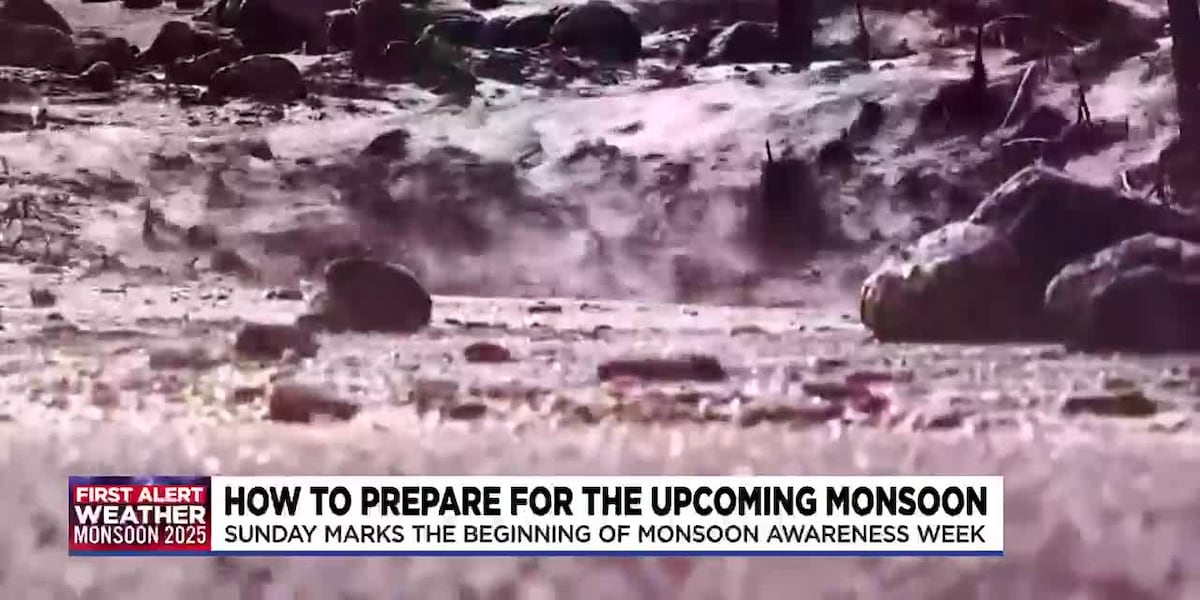
-
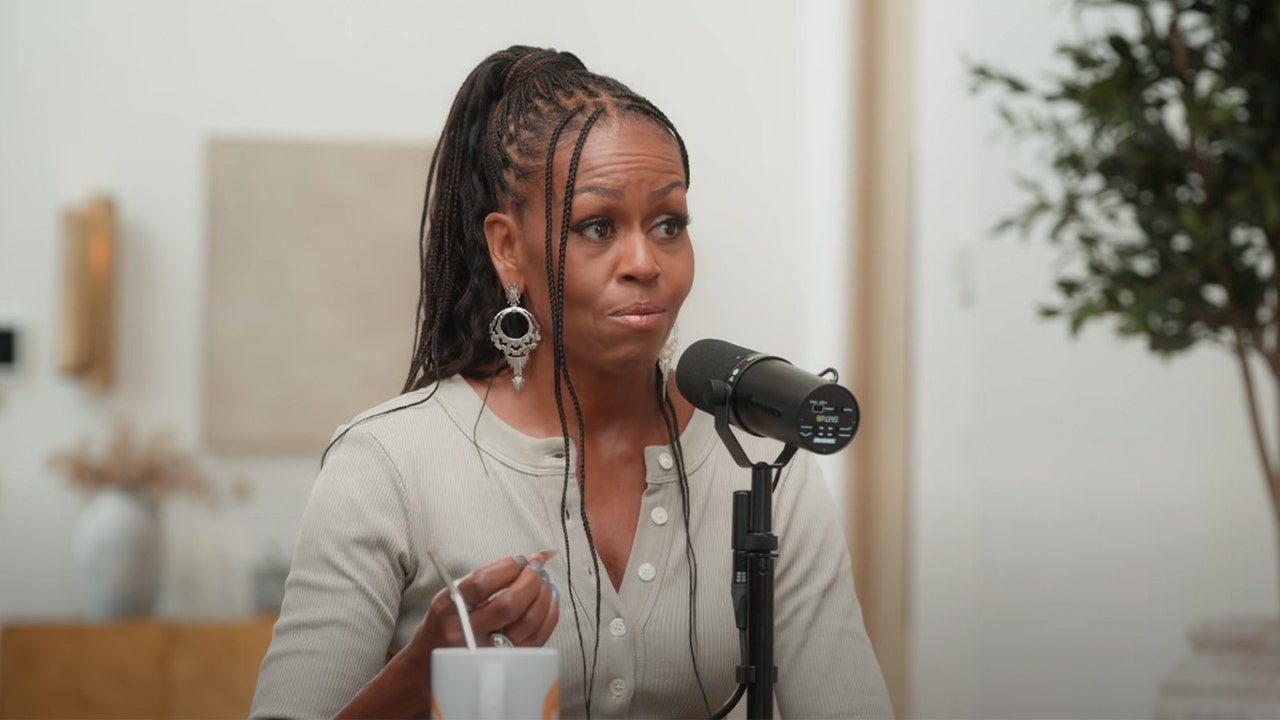
 Politics1 week ago
Politics1 week agoMichelle Obama facing backlash over claim about women's reproductive health
-

 Technology1 week ago
Technology1 week agoOpenAI wants ChatGPT to be a ‘super assistant’ for every part of your life
-

 Movie Reviews1 week ago
Movie Reviews1 week agoThe Verdict Movie Review: When manipulation meets its match
-

 Technology1 week ago
Technology1 week agoWhy do SpaceX rockets keep exploding?
-

 World1 week ago
World1 week agoTwo killed in Russian attacks on Ukraine before possible talks in Turkiye
-

 Finance1 week ago
Finance1 week agoHere's what will boost your feeling of financial well-being the most, researchers say
-

 West2 days ago
West2 days agoBattle over Space Command HQ location heats up as lawmakers press new Air Force secretary
-

 News1 week ago
News1 week agoDepartment of Homeland Security lists sanctuary jurisdictions in Northern California





